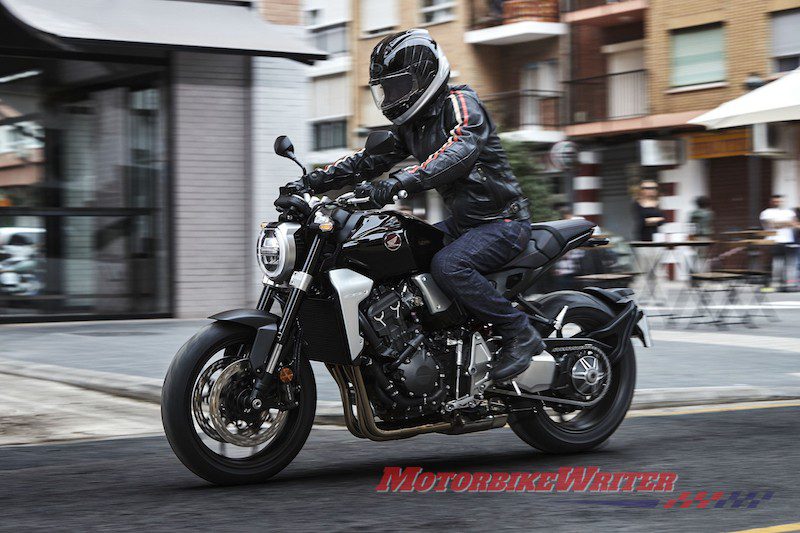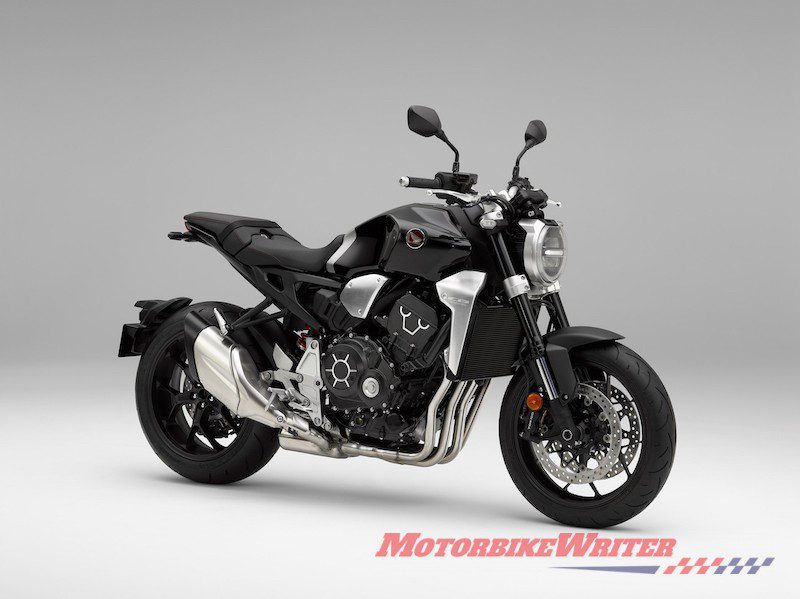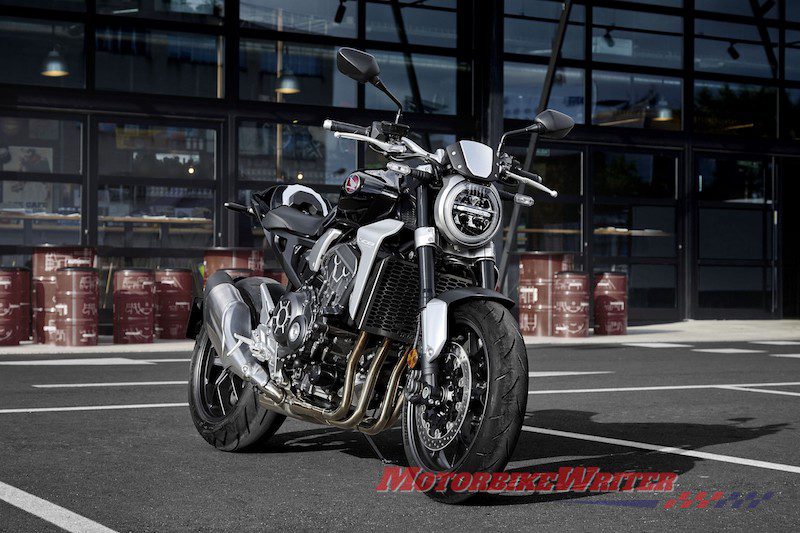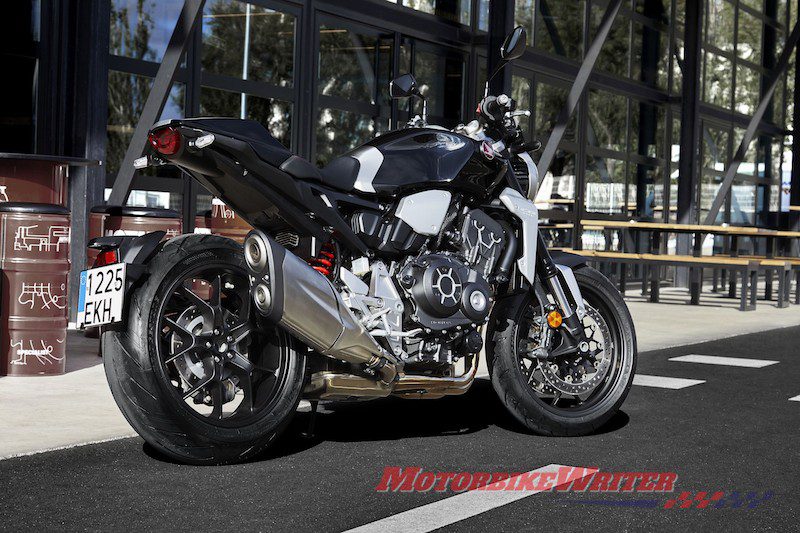Just days after announcing a ridiculous price for the new Monkey Bike, Honda Australia has announced a more realistic price for the modern/retro CB1000R Café Neo Racer.
It will arrive in Honda showrooms this month at $16,499 plus on-road costs which is $500 less than the CBR1000RR without ABS.
Once on-road coats are included it will still be a few hundred short of the new/retro Kawasaki Z900RS (about $17,800 ride away depending on where you live) and its Café Racer variant costing an extra $300. It also sits midway between the Yamaha MT-09 and MT-10.
Honda is making a big thing about this retro model having a modern look and performance.
However, that’s no different from other current retro models such as the Z900RS and the BMW R nineT.
And, of course, it has ABS as standard which is becoming the industry standard since Europe announced mandatory fitment for all models over 125cc.
Café racer styling
There really isn’t any café racer styling in the bike.
It’s basically a UJM (universal Japanese motorcycle) with a naked look, transverse four engine, wide bars and a sit-up-and-beg riding position.
I prefer the look of the CB1100 which Honda Australia stopped importing ages ago.
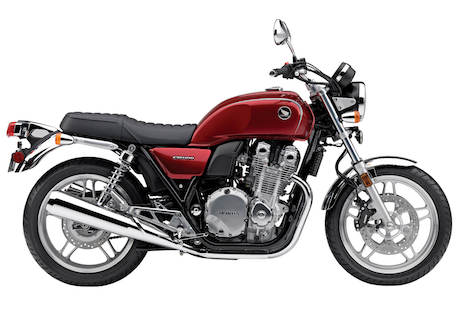
The Café Neo Racer is smaller and 12kg lighter than the previous model CB1000R even though it comes with a lot of metal bits and pieces.
Honda says only six exterior parts are made of plastic including front fender.
This metal look is reflected in the aluminium radiator shroud and airbox cover, machined engine cases, cylinder head, and sprocket hub and flangeless steel fuel tank.
Supporting the radical new look is a box section mono backbone steel frame, with Showa Separate Function Fork Big Piston (SFF-BP) USD suspension up front, a Showa monoshock at the rear, radial-mounted front brakes, ABS and a 190-section rear tyre.
It features LED lighting with a daytime running light ring around the circular headlight as required by European standards.
The T-shaped instrument panel integrates into the top triple clamp and the ignition switch is at the front of the fuel tank.
Café Neo Racer power
The Café Neo Racer is powered by a detuned version of the Fireblade 998cc DOHC four-cylinder engine with peak power (106kW) and torque at lower revs.
Together with the lower weight, it means a 2o% increase in power-to-weight ratio.
It comes with Throttle By Wire (TBW) with three riding modes and a programmable “User” setting.
Project leader for developing the bike, Mr S. Uchida says the CB1000R is about more than just better performance.
At Honda, our intention is always to look to the future and to be ready to lead. Hence, as the Naked sector’s requirements mature, we knew that we had to go much further than giving the new CB1000R a boost in real world performance. Customer expectation and interests are about much more than just ‘how fast?’ We wanted to build in not only exhilaration and emotion to each experience of the CB1000R, but also real pleasure in owning, and showing off, such an individual machine. So we travelled in a new direction and are very proud of the result – both when out on the road and when admiring it in the garage.”


